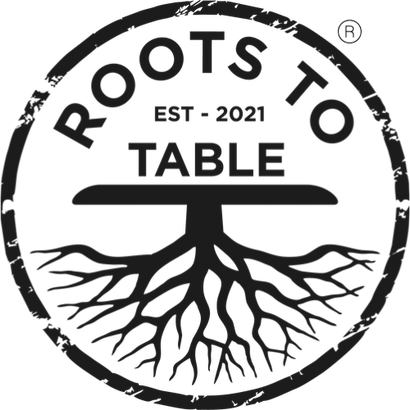Add description, images, menus and links to your mega menu
A column with no settings can be used as a spacer
Link to your collections, sales and even external links
Add up to five columns
Add description, images, menus and links to your mega menu
A column with no settings can be used as a spacer
Link to your collections, sales and even external links
Add up to five columns

Why Elbows on the Table Is a Faux Pas — and How to Host with Grace
January 21, 2025 3 min read
Why Elbows on the Table Is a Faux Pas — and How to Host with Grace
When it comes to dining etiquette, one rule that’s often passed down through generations is “no elbows on the table.” But where did this guideline come from, and why does it still persist today?
At Roots to Table, we believe dining isn’t just about eating—it’s about creating warm, welcoming moments that connect people. Understanding the history behind traditions like this one can add depth to your hosting style while keeping the atmosphere light and enjoyable.

The History of “No Elbows on the Table”
The tradition of keeping elbows off the table has practical and social roots that go back centuries:
-
Medieval Feasts
In crowded medieval dining halls, shared benches and platters left little room for personal space. Resting your elbows on the table wasn’t just inconvenient; it could result in spills or uncomfortable jostling with your neighbors. Keeping your hands off the table became a practical way to respect others' space. -
Symbolism of Manners
In many cultures, proper table manners reflected social standing. Keeping good posture at the table demonstrated self-discipline and refinement, while slouching or sprawling was associated with carelessness or poor upbringing. -
Respecting the Meal
Dining together has long been considered a time for connection and shared respect. Resting your elbows on the table could inadvertently come across as dominating the space or being disengaged from the group.
Why No Elbows on the Table Still Matters Today
While dining etiquette may have softened over the years, “no elbows on the table” remains relevant for a few reasons:
-
Creating a Balanced Space: Keeping elbows off the table allows everyone to comfortably share the space and enjoy the meal without feeling crowded.
-
Sign of Engagement: Good posture signals attentiveness and respect for the meal and those around you. It’s a small, thoughtful gesture that contributes to the atmosphere.
-
Timeless Elegance: Like the craftsmanship of a beautifully made Roots to Table charcuterie board, small details—like posture and manners—enhance the overall dining experience, whether it’s formal or casual.
Teaching Etiquette Without Correcting Guests
When it comes to hosting, we believe in keeping things lighthearted and focused on connection. Get-togethers aren’t the time for correcting behaviors, especially when it comes to things like table manners. Instead, you can share these traditions with your family or close circle before or after the event in a way that feels natural and positive.
-
Lead by Example: The easiest way to instill good manners is by modeling them yourself. Guests will notice your thoughtfulness without feeling judged.
-
Teach the History: Share the origins of traditions like “no elbows on the table” with your family, tying it to stories about respect and connection. Knowing the why behind the rule makes it more meaningful and memorable.
-
Focus on the Experience: As a host, your goal is to make guests feel welcome and comfortable. A beautifully set table, good conversation, and a warm environment matter more than perfect etiquette.
Creating Memorable Moments at the Table
At Roots to Table, we celebrate the joy of bringing people together over great food and conversation. Whether you’re hosting a formal dinner or a casual gathering, the details you add—like a thoughtfully arranged live edge charcuterie board or an inviting table setting—help create a welcoming atmosphere that reflects your care for your guests.
While traditions like “no elbows on the table” remind us of the importance of respect and refinement, the true heart of dining is about connection, not correction. So gather your loved ones, enjoy the laughter, and let the traditions add depth—not stress—to your moments together.

